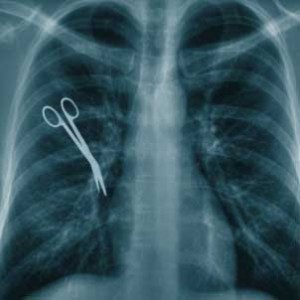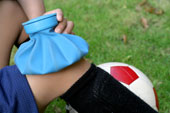July 23rd, 2011 by Dr. Val Jones in Health Tips, Opinion
No Comments »
 Alright, I admit that the title of this post is a little dramatic. But it really does seem that most people I know socially have had a bad experience with the healthcare system lately. Take for example my friend whose 3- year-old went to the hospital for a common pediatric procedure – the little girl was overdosed on a medicine, aspirated, got pneumonia, went into respiratory distress (noticed first by her mom) and remained in the pediatric ICU for several days. The hospital staff swept the overdose under the rug, and outright denied it happened when faced with direct questioning. As outrageous as that all is, my friend chose not to pursue action against the hospital and staff for their error and behavior. She just “let it go” because no permanent harm had occurred.
Alright, I admit that the title of this post is a little dramatic. But it really does seem that most people I know socially have had a bad experience with the healthcare system lately. Take for example my friend whose 3- year-old went to the hospital for a common pediatric procedure – the little girl was overdosed on a medicine, aspirated, got pneumonia, went into respiratory distress (noticed first by her mom) and remained in the pediatric ICU for several days. The hospital staff swept the overdose under the rug, and outright denied it happened when faced with direct questioning. As outrageous as that all is, my friend chose not to pursue action against the hospital and staff for their error and behavior. She just “let it go” because no permanent harm had occurred.
Another dear friend was recently misdiagnosed with having a pulmonary condition when he was in heart failure from an arrhythmia… and almost had a stroke during a contraindicated pulmonary stress test. His simple conclusion: “doctors suck.” Was anyone held accountable for this? No. Again because no permanent harm had occurred.
Just the other night I was having dinner with some visitors from out of town. They both told me Read more »
July 8th, 2011 by Bryan Vartabedian, M.D. in Opinion
No Comments »

It’s the cusp of a new medical year and there’s no shortage of advice on how to succeed as a house officer. The White Coat Underground and Wes Fisher will put you in the right direction. And I love Mary Brandt’s Advice for New Interns.
But just a couple of more points to keep in mind:
Keep your options open. Medicine is changing quickly. You’ll start your career training as a 20th century doctor and retire in a place none of us can imagine. Your ultimate success will be determined by your ability to adapt to a shifting foundation. Keep an open mind.
Quiet your fingers. You are the first generation to have publication tools that make it dangerously easy to breach your patient’s trust. Keep their business off the public forums. Better yet, find a way to apply all this wonderful technology to really move the chains forward. Read more »
*This blog post was originally published at 33 Charts*
July 1st, 2011 by DrWes in Health Tips, Opinion
No Comments »

He sat in a crisp white coat, staring at a computer screen, note cards in his lap. Occasionally, I noted him jot a note to himself as he compiled his list. A nurse sat next to him, pounding feverishly on the keyboard as she recorded her nurse’s note. He tentatively moved his mouse, then clicked, still staring.
I recall my first day in clinical medicine: no computer, an ER rotation, a white board filled with names and abbreviated medical problems next to them with little magnetic color-coded labels nearby. Room 1: Head trauma. Room 2: Abscess. Room 3: UTI, Room 4: Rash.
I got room 2. It was the biggest, bad-est infected sebaceous cyst on a guy’s back a newly minted doctor had ever seen. Can you say “softball?” “See one, do one,” they told me. And off I went.
Much in medicine has changed since then, but much remains the same. Medicine is miraculous, terrifying, then rewarding all at once. Fortunately, there’s a method within the madness that can serve to preserve and protect those who first start out. Every doctor has had the fortune to learn from those who passed before them as begin their journey to refine their title of “doctor” (literally, “teacher.”)
I thought it would be interesting to put a few of the “Rules of the Road for Medicine” down on paper (with the help of friends on Twitter) for interns and residents as they embark on their own incredible journey ahead. The list is not exhaustive, but hopefully can serve as a resource for our new doctors as they head off to meet their clinical challenges ahead.
Rule #1: Treat every patient like your mother Read more »
*This blog post was originally published at Dr. Wes*
May 6th, 2011 by John Mandrola, M.D. in Health Tips
2 Comments »

The number of emails that come from fellow cyclists (and endurance athletes) with heart rhythm issues amazes me. I am more convinced than ever that our “hobby” predisposes us to electrical issues like atrial fibrillation (AF)—that the science is right.
Obviously, my pedaling “habit” creates an exposure bias. I hear from many of you because we cyclists understand each other. Like you, I consider not competing a lousy treatment option.
As a bike racer, I know things: that prancing on an elliptical trainer at a health club doesn’t cut it, and, that spin classes may look hard, but do not come close to simulating real competition. I know the extent of the inflammation required to close that gap, to avoid getting dropped when one of the local Cancellara-types have you in the gutter in a cross-wind, or the worst one of all, to turn yourself inside out to stay with a group of climbers over the crest of a seemingly endless hill—”ten more pedal strokes and I’m out”…Then ten turns to 20, then 40, and maybe you hang, and maybe not. The common denominator of all this: suffering.
It’s little wonder that we get AF.
With that as a backdrop, my goal for this post is to provide a modest amount of insight to the most common question asked by athletes with AF.
“Should I have an ablation, or not.”
Though my two episodes of heart chaos amount to only a mild case of AF, I think it’s fair to say that personal experience with a problem helps a doctor better understand your choice. I’ve thought to myself, on more than one occasion, what would I do if the watt-sucking irregularity persisted? Would I have an ablation; would I live with it; would I stop drinking so much coffee? Read more »
*This blog post was originally published at Dr John M*
April 28th, 2011 by Paul Auerbach, M.D. in Health Tips
2 Comments »

 Along with blisters and sprains, muscle strains are among the most common afflictions for active persons in the outdoors. Common medical dogma is to use the “RICE” approach for sprains and strains of—rest, ice (application of cold), compression, and elevation.
Along with blisters and sprains, muscle strains are among the most common afflictions for active persons in the outdoors. Common medical dogma is to use the “RICE” approach for sprains and strains of—rest, ice (application of cold), compression, and elevation.
This is more applicable to sprains (e.g., an ankle sprain) than to strains, because the sprained body part is usually a limb (ankle, knee, wrist)
that is amenable to this approach. Strains more often involve larger muscle
groups, such as those in the back, chest, thigh or abdomen, or difficult-to-approach areas, such as the neck or groin.
Prevailing theory for treatment of a muscle strain is that one applies external cold for 24 to 48 hours, and discontinues it after 72 hours, at which time one begins application of external heat. The rationale is
that swelling (from leakage of blood and tissue fluid) and inflammation prevail in the first two days, and that after three days, one wishes to increase local circulation and augment reabsorption of the fluid that has collected. There is some science to this, and these recommendations have been around for as long as I can recall. Read more »
This post, Muscle Strain: Should You Treat It With Hot Packs Or Cold Packs?, was originally published on
Healthine.com by Paul Auerbach, M.D..
 Alright, I admit that the title of this post is a little dramatic. But it really does seem that most people I know socially have had a bad experience with the healthcare system lately. Take for example my friend whose 3- year-old went to the hospital for a common pediatric procedure – the little girl was overdosed on a medicine, aspirated, got pneumonia, went into respiratory distress (noticed first by her mom) and remained in the pediatric ICU for several days. The hospital staff swept the overdose under the rug, and outright denied it happened when faced with direct questioning. As outrageous as that all is, my friend chose not to pursue action against the hospital and staff for their error and behavior. She just “let it go” because no permanent harm had occurred.
Alright, I admit that the title of this post is a little dramatic. But it really does seem that most people I know socially have had a bad experience with the healthcare system lately. Take for example my friend whose 3- year-old went to the hospital for a common pediatric procedure – the little girl was overdosed on a medicine, aspirated, got pneumonia, went into respiratory distress (noticed first by her mom) and remained in the pediatric ICU for several days. The hospital staff swept the overdose under the rug, and outright denied it happened when faced with direct questioning. As outrageous as that all is, my friend chose not to pursue action against the hospital and staff for their error and behavior. She just “let it go” because no permanent harm had occurred.





 Along with blisters and sprains, muscle strains are among the most common afflictions for active persons in the outdoors. Common medical dogma is to use the “RICE” approach for sprains and strains of—rest, ice (application of cold), compression, and elevation.
Along with blisters and sprains, muscle strains are among the most common afflictions for active persons in the outdoors. Common medical dogma is to use the “RICE” approach for sprains and strains of—rest, ice (application of cold), compression, and elevation.







